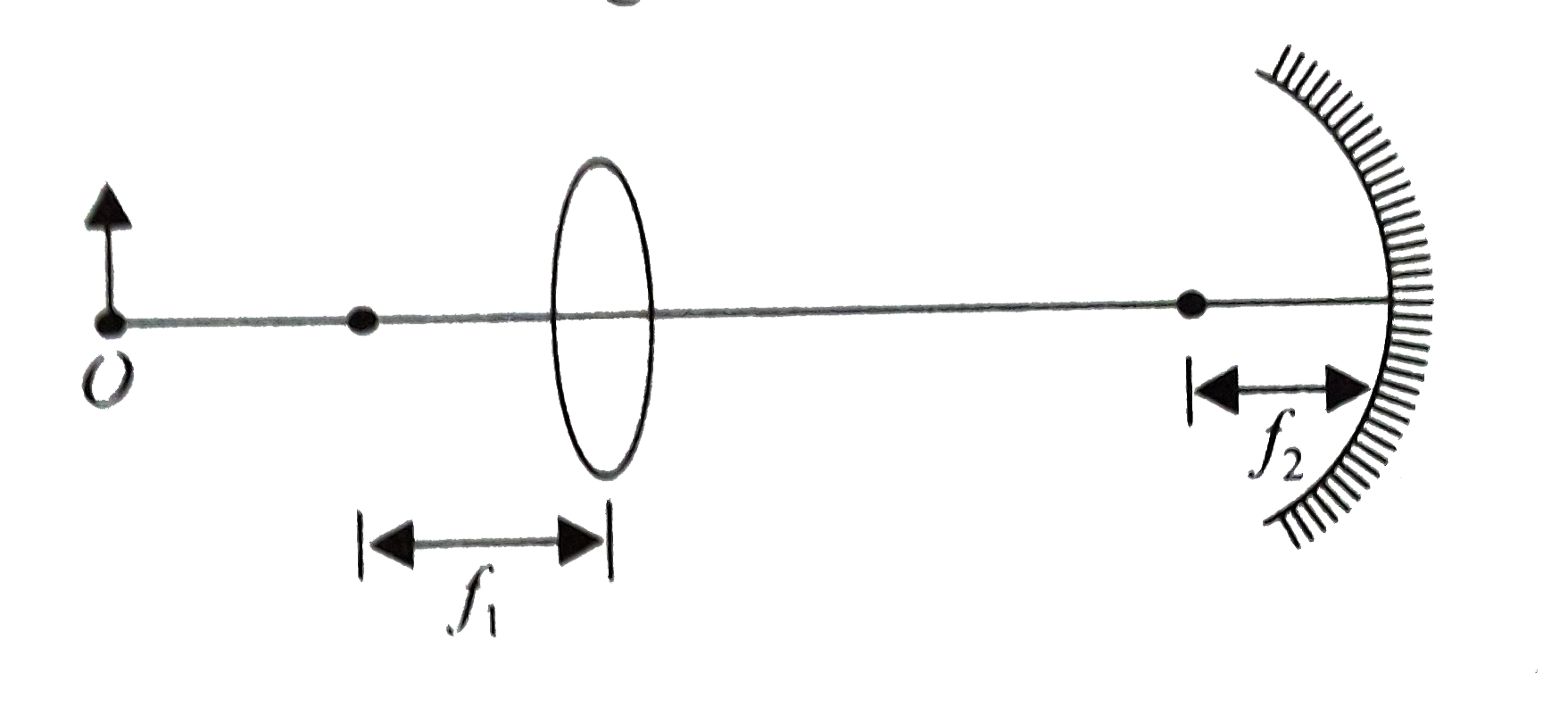A beam of parallel rays is brought to focus by a planoconvex lens. A thin Concave lens of the same focal length is joined to the first lens. The effect of this is
The focus shifts to infinity
The focal point shifts towards the lens by a small distance
The focal point shifts away from the lens by a small distance
The focus remains undisturbed
The correct Answer is:A
To solve the problem, we need to analyze the effect of combining a plano-convex lens and a concave lens, both having the same magnitude of focal length but opposite signs.
1. Identify the Focal Lengths:
- Let the focal length of the plano-convex lens (Lens 1) be f1 (positive value).
- Let the focal length of the concave lens (Lens 2) be f2 (negative value).
- Since they have the same magnitude, we can express this as:
f1=+fandf2=−f
2. Use the Lens Formula:
- The combined focal length F of two lenses in contact is given by the formula:
1F=1f1+1f2
3. Substituting the Focal Lengths:
- Substitute the values of f1 and f2:
1F=1f+1−f
- This simplifies to:
1F=1f−1f=0
4. Determine the Combined Focal Length:
- If 1F=0, then:
F=∞
- This means that the combined system of the two lenses will not converge the rays to a finite point but will instead cause them to diverge.
5. Conclusion:
- The effect of joining a plano-convex lens and a concave lens of the same focal length (but opposite signs) is that the effective focal length of the system becomes infinite.
Final Answer:
The effect of joining a plano-convex lens and a thin concave lens of the same focal length is that the combined focal length tends to infinity.
- Let the focal length of the plano-convex lens (Lens 1) be f1 (positive value).
- Let the focal length of the concave lens (Lens 2) be f2 (negative value).
- Since they have the same magnitude, we can express this as:
f1=+fandf2=−f
- The combined focal length F of two lenses in contact is given by the formula:
1F=1f1+1f2
- Substitute the values of f1 and f2:
1F=1f+1−f
- This simplifies to:
1F=1f−1f=0
- If 1F=0, then:
F=∞
- This means that the combined system of the two lenses will not converge the rays to a finite point but will instead cause them to diverge.
- The effect of joining a plano-convex lens and a concave lens of the same focal length (but opposite signs) is that the effective focal length of the system becomes infinite.
The effect of joining a plano-convex lens and a thin concave lens of the same focal length is that the combined focal length tends to infinity.
Similar Questions
Find the power of a concave lens of focal length 2m.
View SolutionWhich lens, thick or thin has greater focal length?
View SolutionThe focal length of a plano-concave lens is -10 cm , then its focal length when its palne surface is polished is
View SolutionA convex lens of focal length A and a concave lens of focal length B are placed in contact. The focal length of the combination is
View SolutionA parallel beam of monochromatic light falls on a combination of a convex lens and a concave lens of focal lengths 15 cm and 5 cm respectively. What is the distance between the two lenses to obtain a parallel beam of light from the concave lens ?
View SolutionA change in the focal length of the eye lens is brought by.
View SolutionA convex lens of focal length 80 cm and a concave lens of focal length 50 cm are combined toghether. What will be their resulting power ?
View SolutionWhen a thin convex lens is put in contact with a thin concave lens of the same focal length (f), then the resultant combination has focal length equal to
View SolutionWhat is the optical power in dioptre of a concave lens of focal length 50 cm?
View SolutionAn object is placed in front of a converging lens at a distance equal to twice the focal length f1 of the lens. On the other side of the lens is a concave mirror of focal length f2 separated from the lens is a concave mirror of focal length f2 separated from the lens by a distance 2(f1+f2). Light from the object passes rightward through the lens, reflects from the mirror, passes leftward throught the lens, and forms a final image of the object.

View Solution
